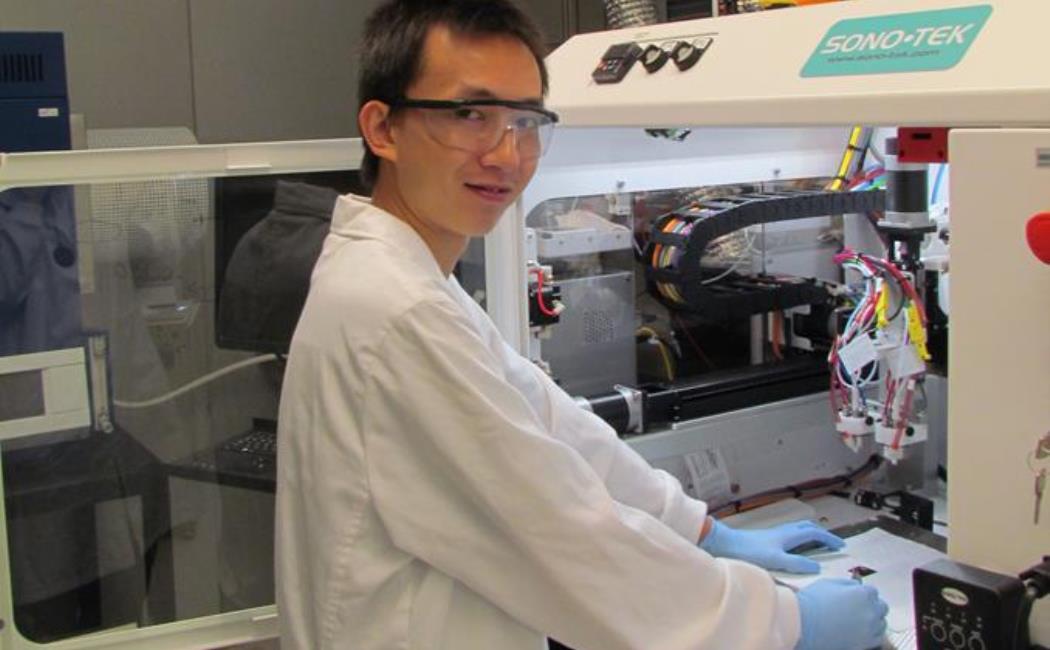Chuan received his B.S. Degree in Material Science from Beijing University of Technology in 2012. He also studied Chemical Engineering at Tulane University in New Orleans, USA.
In 2012, Chuan met Professor Husam Alshareef, who told him of the remarkable opportunities available for students at KAUST. Delving into information about the University, he was both surprised by its international diversity and intrigued by the chance to experience firsthand Saudi Arabia’s unique culture. He was impressed by the University’s commitment to academic freedom and the ample funding it provides its researchers. He decided to apply and was excited to be accepted into the Functional Nanomaterials and Devices Group supervised by Professor Alshareef. He obtained his M.S. degree from KAUST in 2014.
Chuan’s research at KAUST focuses on the design and preparation of nanostructured ternary chalcogenide materials, particularly sulfur-containing compounds, for energy storage and conversion. Sulfur is very abundant in KSA as it is a by-product of the oil industry. This huge reserve can be used to create compounds containing sulfur for various applications at a significant cost advantage. Chuan has developed new methods to synthesize nanostructured ternary chalcogenides, which are superior to binary chalcogenides when used as electrode materials in supercapacitors and batteries.
Chuan has so far published 17 peer-reviewed papers with Professor Alshareef since coming to KAUST, 8 as first author and 9 as co-author. Five of his papers have been published in top Material Science Journals, including Advanced Materials, ACS Nano, Advanced Energy Materials, and Chemistry of Materials.
Focused on applications, Chuan has designed and fabricated asymmetric supercapacitors based on ternary chalcogenides with some of the best-reported electrode and supercapacitor features. One of his papers, published in ACS Nano in 2014, on asymmetric supercapacitors has already been cited nearly 160 times, and it is recognized as an ESI highly cited paper (Top 1%).
In a recent publication, published in Chemistry of Materials and
featured on KAUST Discovery, Chuan and his colleagues demonstrated that a mineral (siegenite or nickel cobalt sulfide), long thought to be a semiconductor, is in fact a metal. Experimental and theoretical studies, most of which were done for the first time, suggested that it is time to rethink the presumed semiconducting nature of this promising material.
This paper, published in September 2015, has already been cited 24 times.
Chuan says that there are many benefits to studying at KAUST: the exceptionally well-equipped faculty laboratories as well as easy access to the University’s state-of-the-art Core Lab Facilities for materials synthesis and characterization make studying at KAUST a dream come true for an experimentalist; the very low student-to-faculty ratio (currently around 6:1) means all classes are small; making it easy to get to know the professors and build personal relationships with them.
“Chuan is an excellent PhD student who has exceeded all expectations. He is a curious researcher who sees the big picture in his research field. He plans his experiments well and executes them efficiently. His research output has been phenomenal, and I am very proud of him.” said Professor Alshareef.


